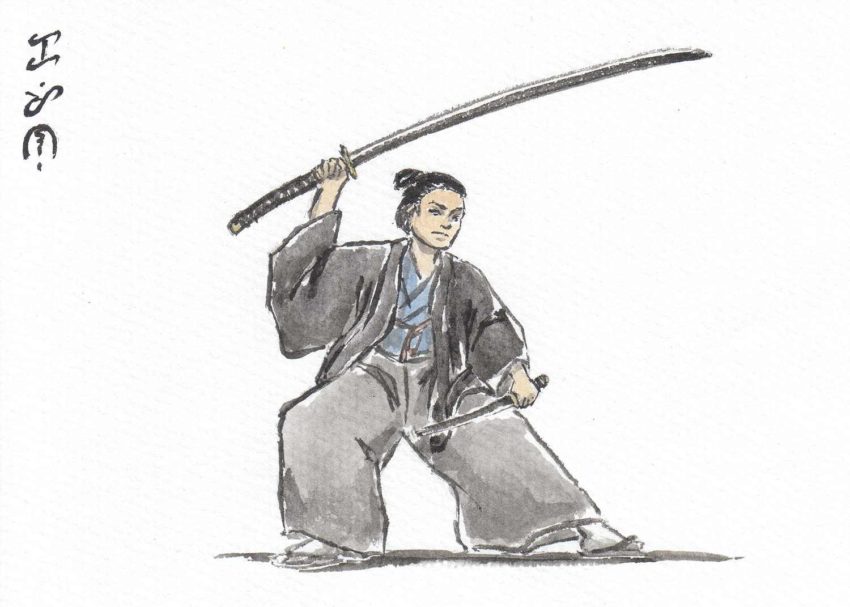Although the Japanese have traditionally made many types of swords, perhaps the most well-known of the Japanese long sword type. This variety is well known for its durability and comes in many different forms. Of course, in order to understand the importance of samuraiSAMURAI 侍 "warrior serving a lord" learn more... swords, you first of all must fully understand the way of life of a samurai.
For centuries, the Japanese have refined the art of sword making. It isn’t just a pastime, but also a way of life. The samurai warriors literally depended upon having the right sword. For them, having the wrong one could be the difference between life and death. Obviously, in today’s age of technological advancements, there is no longer a military need for swords. However, if you are a Japanese history enthusiast like us, then you probably realize that Japanese long swords can have incredible craftsmanship that you just don’t see in today’s products.
Part of the reason that Japanese long swords are so collectable today is because samurai lineage can be traced back to a specific group of people: the Mononofu, who lived in Japan from 600 BC To 6 AD.
The Mononofu had a deep faith in many different gods, and they believed that the best way to revere them was to “sacrifice their enemies to them.” Perhaps not surprisingly, the best way to accomplish this was seen to be the beheading of captives. They did this because they had a belief that the souls of their enemies would “never go back to Earth”. This is the reason there is such fine craftsmanship in samurai long sword weaponry; the job was so vitally important that only the greatest would do.
Japanese Long Sword List of Types
Nodachi
The nodachiNODACHI 野太刀 "field sword" learn more... has become known as the Japanese long sword for the soldier. These swords first of all met the definition for a long sword because they were more than two shaku (over 60.6 centimeters) in length. The nodachi was well over this amount, measuring a full meter in length. This made the blade very useful in open battle situations, and soldiers would often throw it at an opposing soldier’s horse in order to disable it.
Naturally, this sword was very heavy, so it took a lot of extensive training in order for a soldier to be able to fully utilize it. The nodachi was most widely used between 1336 and 1392. Once a samurai gained experience with this sword, he often found it very useful when fighting against an enemy’s cavalry, who soon trembled at the giant fearsome blades.
Odachi
The odachiODACHI 大太刀 "large tachi sword" learn more... was known as a ceremonial long sword simply because it was extremely large. Measuring about 3 shaku, it was considered too impractical for use in battle. Samurai would often use this sword during rituals and offer a fine-made example to gods and goddesses, accompanied by prayers of hope for victory in a war.
The great length of an odachi made it almost impossible for it to be properly forged in heat and then quenched like normal weapons. The odachi was invented during a time where most metal tools were very crude, but almost all samurai had at least one for their ceremonial purposes.
Tachi
The tachiTACHI 太刀 "great sword" learn more... was a Japanese long sword that was developed for all of the cavalry activities the samurai were involved in. This sword was introduced in the Heian Era (794-1184), when the Japanese were embroiled in serious disputed with invading Mongols. It was a curved sword that the military could depend on for an extra edge in battle. Warriors would typically hang their tachi from an obi, which is a sash or belt in traditional Japanese clothing.
Warriors would usually pair the long Japanese samurai sword with some smaller swords or daggers and empty all of them for personal protection. One of the things that makes the tachi sword interesting is that it can be difficult to distinguish it from other Japanese swords without a specially trained eye. However, a tachi is generally a bit longer than other types of samurai swords.
One of the main difficulties that the samurai had was finding the right blade that could penetrate the thick armor of the Mongolian army. Japanese warriors would often end up casualties when Mongol warriors were able to continue their advance thanks to superior blades. This all changed, however, with the advent of the tachi sword. The curved and heftier blade revolutionized Japanese fighting, but all good things must come to an end. By the 1500s, even tachi were outlasting their usefulness. But a new, improved sword was soon to come, the most legendary of all Japanese long swords.
Katana
Following the Mongol invasion of the 16th century, the tachi finally fell out of favor for good and was replaced by the katanaKATANA 刀 "sword" learn more.... This blade quickly became extremely popular. Part of the reason for this was that it was slender and single-edged –graceful but deadly. The katana also had a circular or two-handed guard complete with a two-handed grip. The Japanese found that katanas made it much easier to reach targets and strike enemies.
Summing Up Japanese Long Swords
When you consider the unique design of these long-bladed swords and their rich and varied history, it isn’t hard to see why they continue to be highly collectible. The samurai were masters of the deadly art of fighting and of protecting their homeland, and these Japanese long swords evoke a time when chivalry, honor, ritual, and “death before dishonor” were still important elements of society.

